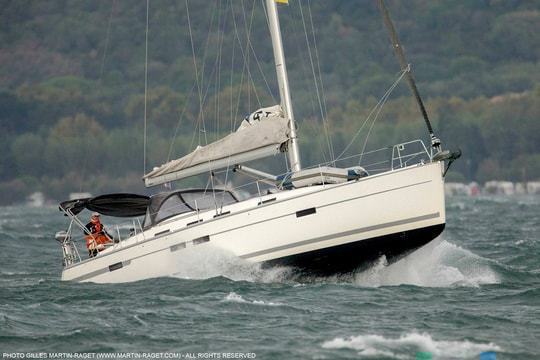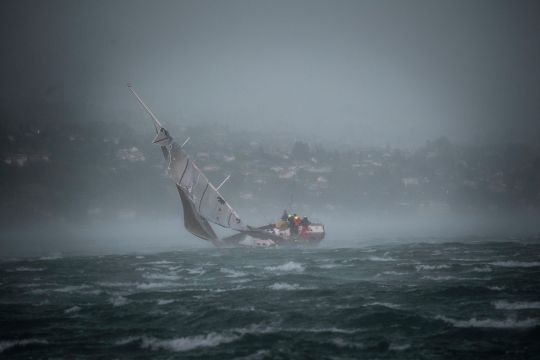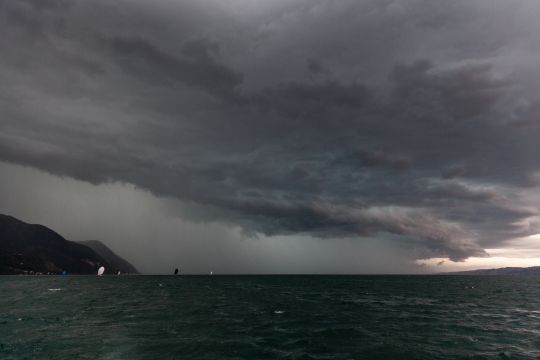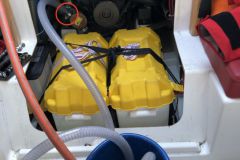Sheep on the sea, big waves, strong wind euros When can we say that the wind is too strong to sail? According to beaufort scale sailors are accustomed to saying that from force 6 euros fresh wind is a "heavy weather". This corresponds to a wind of 22 to 27 knots, although these conditions are particularly fun for experienced sailors.
If this is not your case and you find yourself suddenly caught in strong gusts of wind, here is how to prepare yourself. These tips will be adapted to your boat and your type of navigation and are also valid in port if you are about to go to sea.
Reducing the canopy
When the wind gets stronger, the basic rule is to reduce the sail area. Either by taking one or more reefs, or by directly changing the sails for heavy weather sails. The key to success is anticipation. It will be easier for you to make these changes before the gale, which could make the boat unstable and your movement difficult, even dangerous.
Anticipation being the key word, always prepare the maneuvers and the necessary equipment to hoist the sails.

Insure the equipment
In heavy weather, your boat will heel more and be shaken. Stow everything that can move on board, in the cabin and outside in secure (closed) storage. Otherwise, tie up your equipment to prevent damage from falling.
Check the condition of the euro rigging if you haven't left yet and replace anything that won't hold up before setting sail. Check the sails too.
Keeping the boat dry
Make sure all hatches and deck hatches are closed to prevent your boat from taking on water. Remember to close the companionway to keep the saloon dry. Raise the deckhouse top if you have one.

Adapting your outfit
In heavy weather, the air will become colder, but also more humid. You must therefore plan for a very warm outfit, but also one that is water repellent so as not to get wet. Once again, the key to success is anticipation. It is not once you are busy managing the boat that you will be able to change.
Don't forget to equip yourself and your crew with life jackets and safety harnesses. Staying on deck can be difficult, so keep the less experienced, especially children, warm and dry.
Feeding yourself
If you have to sail in bad weather and it's getting stronger, you'll be glad you have a full belly. So eat while you can and invite your crew to do the same before the gale hits.
Prepare your team members for a possible accident
One can never be too careful, but at sea it is better to anticipate, especially when sailing with non-aguerrists. Even the most experienced sailors can lose their nerve in a panic. So, have a plan of action in case of need, review man overboard or euro capsize techniques if you are in a dinghy.
Check the location of safety equipment, a knife, life raft, anchor, pump, or even the riser tourniquets - anything that will allow you to act if you need it.




















